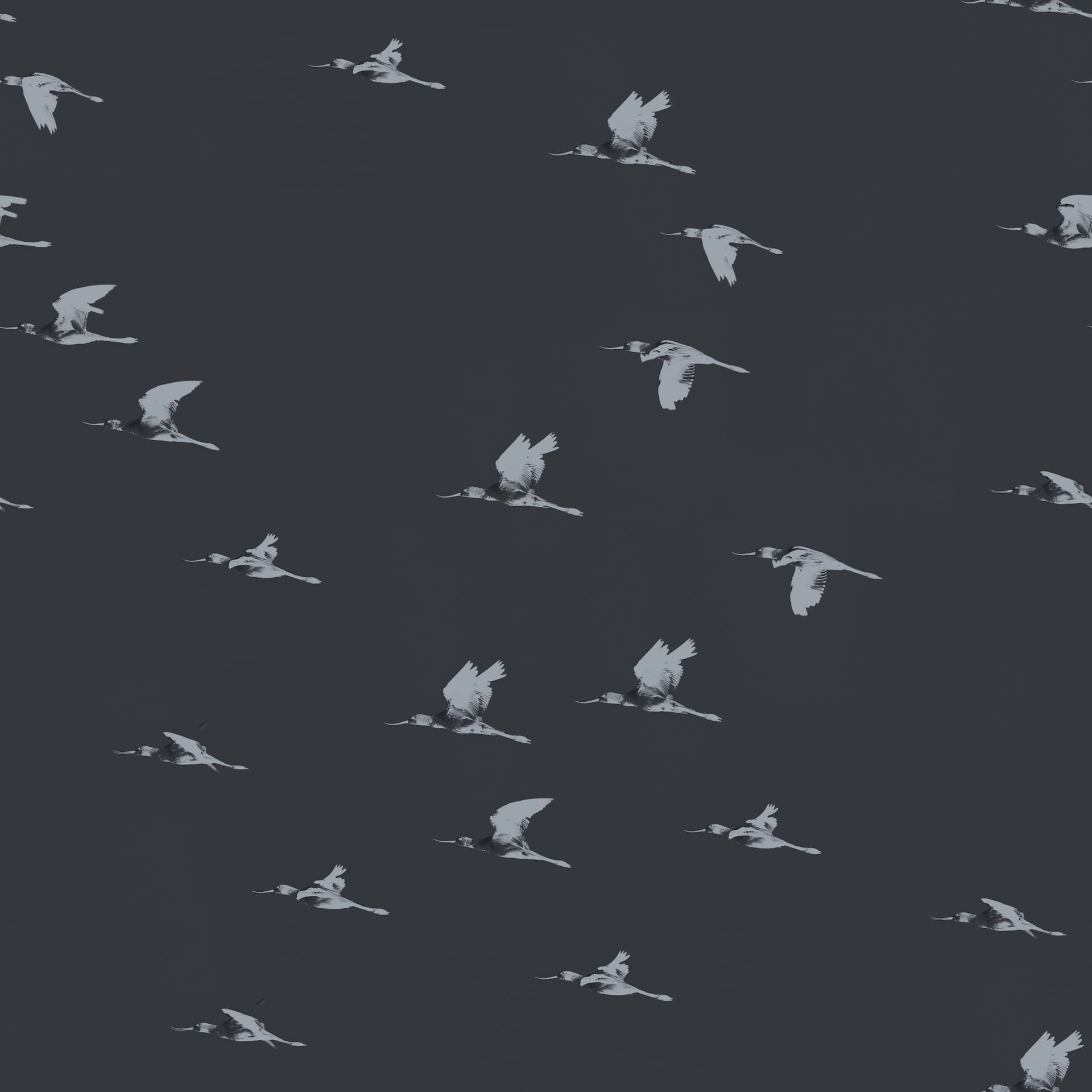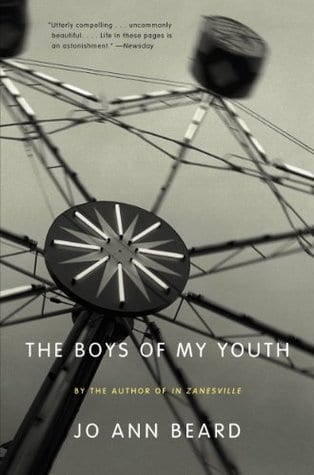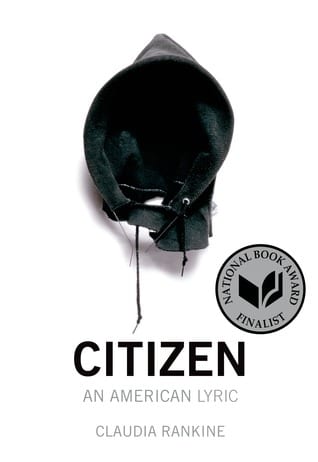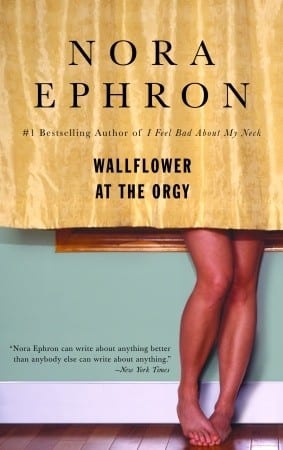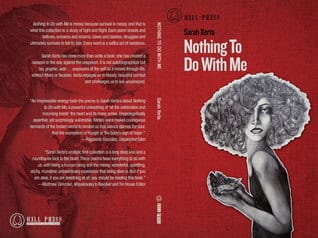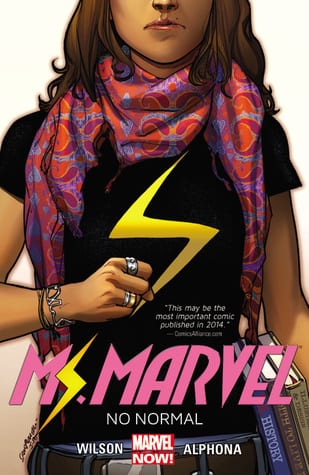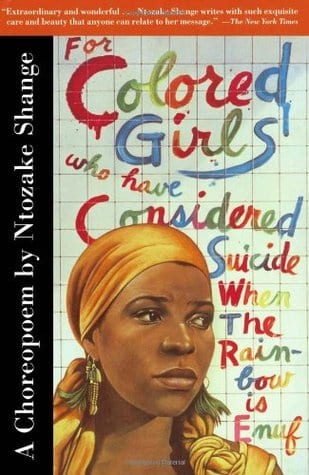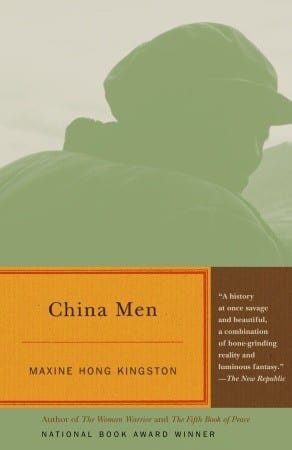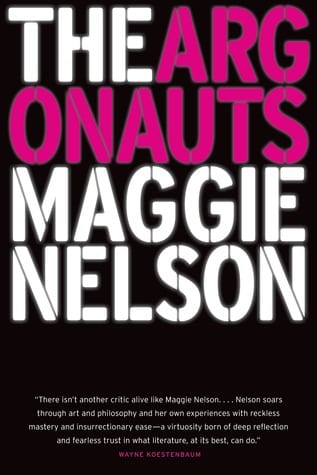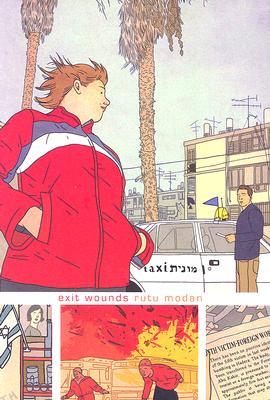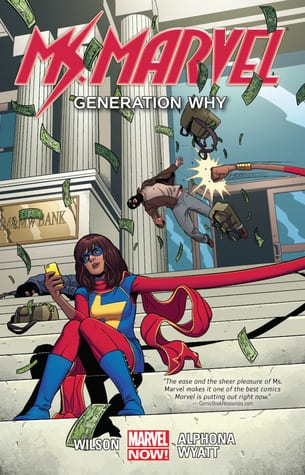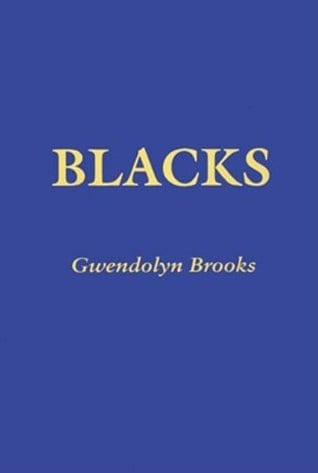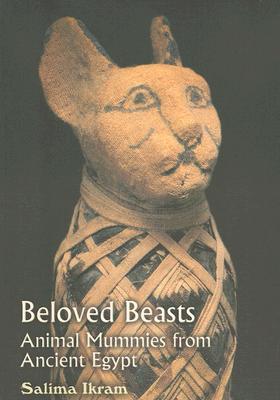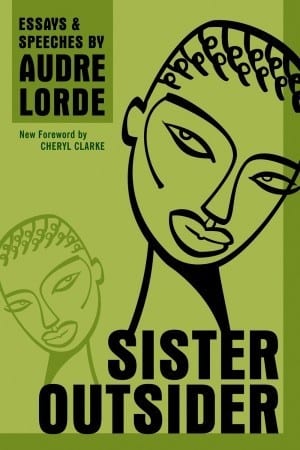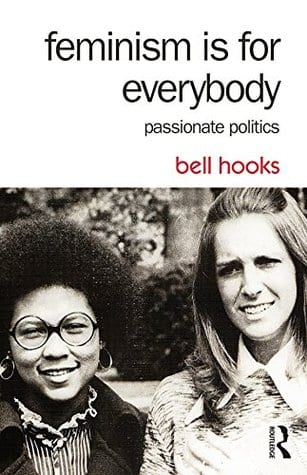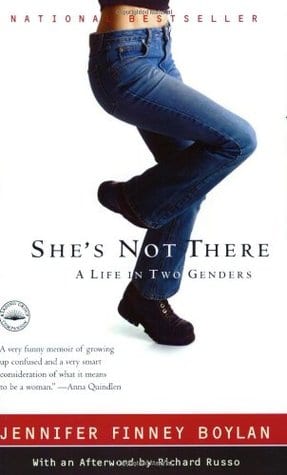Today is July 1st, and you know what that means––hot dogs and fireworks are right around the corner, the summer is already a third over, and with the end of the second quarter, it’s time for another check-in on my 2015 reading challenge slash New Year’s Resolution.
In case you forgot: My goal for 2015 is to read 50 books by women, with the majority of those by women of color.
In terms of numbers, 50% of fifty is twenty-five books, and, not only am I on track, I am ahead of the game at the moment––I just started book number twenty-seven this morning! This is a good thing since, as some of you may know, I will start teaching full-time at the end of August and will have less time for free reading (and also will have to read a lot of additional books for work––many of which, I’m guessing, will not be by women). So let’s get right to this update so I can get back to my books.
Here’s what I’ve read since my 1st Quarter Check-In:
13. The Boys of My Youth by Jo Ann Beard: Last I left you, I was about halfway through this collection of essays. When I finally got to the famous essay, “The Fourth State of Matter,” I was reading on a bench in the sun (despite the cold, as it was early April) outside of the Cambridge Public Library. I’d heard a lot about this essay, and in my typical cynical sense, I was prepared for it to be a let down or just a medium after so much hype from so many people. But I finished that essay, sitting on the bench in the sun, in the cold, and I felt gutted. I felt like Jo Ann Beard had ripped all my organs out and threw them in the snow. I haven’t had that powerful of a reaction to a piece of writing in a long time, and I walked back to my apartment from the library engrossed in thought, feeling like an empty shell, sort of listlessly drifting. It was an awesome feeling––awesome in the sense of awe-inspiring, not necessarily in the sense that I felt really good. In summary: read The Boys of My Youth for “The Fourth State of Matter” alone. Or just read “The Fourth State of Matter.” You have to.
14. Citizen: An American Lyric by Claudia Rankine: Much like “The Fourth State of Matter,” I had heard a lot about this book before I read it––I had even heard Claudia Rankine speak at the AWP Conference in Minneapolis this April––and, again, I was not disappointed. I was completely blown away. I love how Claudia Rankine defies any sort of straightforward genre––this book is at once personal essay, poetry, cultural criticism, art criticism, history, and myth––and how she incorporates her own personal story as a Black woman in America with the larger story of racism in America. I feel like I’m just rambling right now, but the point is that I can’t really explain this book, but it is one of the most powerful, intense things I have ever read in my whole life. You just have to read it to get it. Also, this book confirmed my feelings that everything that Graywolf Press publishes is pure gold.
15. Wallflower at the Orgy by Nora Ephron: I was beginning to feel like a failure of a Wellesley alumna for how little Nora Ephron I had read. Yeah, I had seen You’ve Got Mail and Sleepless in Seattle. Yeah, I’d read some of her profiles and essays, but I had yet to sit down and read through one of her books. And I’m so glad that I did––my favorite thing about getting to read a whole group of Nora Ephron’s journalistic essays in a row is to see how even when the first person narrator is absent, her personality and dry, witty tone is evident. I finished Wallflower at the Orgy and immediately wanted to start I Feel Bad About My Neck, but then I got worried that “fifty books by women” would quickly turn into “fifty books by Nora Ephron.”
16. Nothing To Do With Me by Sarah Xerta: As a prose writer of nonfiction and a personal essay junkie, I’m not drawn to a lot of poetry, but I am trying to read more of it because it helps my brain think about language differently. I picked up Sarah Xerta’s book because I had the pleasure of meeting her at the AWP Conference, as she is friends with my buddy Tuck, and I am so happy I read Nothing To Do With Me because Sarah Xerta’s poetry was an incredible reminder about the beauty and intense power of concise language and specific words themselves. So many of these poems are like a quick blow to the head––they left me dazed and reeling and amazed. Sarah Xerta is a genius, and, as I know from having the good fortune to meet her, a lovely human as well. A really great book by a really great person.
17. Ms. Marvel, Vol. 1: No Normal by G. Willow Wilson: I heard that the new reboot of Ms. Marvel had cast the superhero as a teenage Pakistani Muslim girl from New Jersey, which I thought was pretty awesome, and I wasn’t disappointed by the series. I love how Kamala Khan is just an average teenager, dealing with friendship angst and school drama and strict parents with high expectations. This book was a fun break from some of the heavier work I have been reading, and what I loved the most was that Kamala Khan wasn’t a “strong female character.” She is just a girl, who can be strong, but also can be weak and confused and unsure of herself. In summary, she is just a regular old girl, to whom I am sure a lot of teenage girls can relate. I would have been obsessed with the series in high school, for sure.
18. for colored girls who have considered suicide/when the rainbow is enuf by Ntozake Shange: I had seen parts of the movie For Colored Girls, but I had never read the original poem-play that inspired the film. I’d like to take a moment here to remind all of you (and inform those of you who don’t know) that once upon a time I was really into theatre and writing plays, and I think in the third quarter I want to try to read some more plays by women, because reading for colored girls stirred up something inside of me that remembered just how powerful words can be when paired with movement and action. This poem-play in particular is simultaneously beautiful and heartbreaking, and the way that Ntozake Shange has seven women perform the words of her poetry––it is inspiring. This book is also an incredible resource for understanding just how race and class play an enormous role in feminism.
19. China Men by Maxine Hong Kingston: I never said that I would read fifty books by fifty different women, and I am glad about that, because I am obsessed with Maxine Hong Kingston. I heard about China Men in a lecture at the AWP Conference on imagination and speculation in nonfiction––about how Maxine Hong Kingston was able to craft these beautiful, vivid, incredible stories based on the little information and few concrete facts she had about her father, grandfather, and great-grandfather’s experiences as Chinese immigrants in the U.S.A. Clearly she done her research––the book is full of rich details from the time periods––and she has read the stories of men similar to the men in her family, but the way she is able to float between myth and legend and fact is goddamn INCREDIBLE and something to be admired. I can’t wait to read The Woman Warrior next.
20. The Argonauts by Maggie Nelson: Everything I wrote about Claudia Rankine’s Citizen can pretty much apply to The Argonauts, except that instead of exploring race in America, Maggie Nelson is exploring gender and sexuality. Again, Maggie Nelson completely defies any kind of standard nonfiction form––she has poetic vignettes mixed up with philosophical analysis interspersed with personal anecdotes. What I really love though is how Maggie Nelson uses her own family’s tale––her relationship with the gender-fluid Harry Dodge, Harry’s son from a previous relationship, and the son that she and Harry have together with the help of a sperm donor––to explore gender, queerness, and the concept of family. Once again, Graywolf kills it.
21. Exit Wounds by Rutu Modan: I got into the Israeli graphic novelist Rutu Modan because I used to intern at the Frances Goldin Literary Agency in New York––the agency that represents her. Exit Wounds is Rutu Modan’s earlier book, and while I enjoyed it a lot, I think I liked her newer book The Property more. However, it’s completely worth the read, and I like how her stories always seem to involve some element of family mystery––the things left unsaid, the things you have to figure out after someone dies, the things that get forgotten.
22. Ms. Marvel, Vol. 2: Generation Why by G. Willow Wilson: This is the second installment of the Ms. Marvel reboot. Kamala Khan’s adventures continue, and I found Vol. 2 just as enjoyable as Vol. 1 (see my review above).
23. Blacks by Gwendolyn Brooks: I’d like to take a moment to shout out to my friend, fellow Wellesley alumna, and fellow writer Diamond Sharp, who compiled this really great list of Black feminist books for The Root. In an attempt to try not to be less of a Problematic White Feminist and to diversify the group of women writers I read (sorry, Nora Ephron, you’re great and all but…) I have been using Diamond’s list for recommendations, which included Gwendolyn Brooks’s classic (and giant) collection of poetry and prose-poems. Again, like with Sarah Xerta’s book, it was exciting to read poetry and get into a different mindset about language, but don’t pick up this 500+ page book and think “Oh, poetry! I’ll fly through this!” You have to sit with Gwendolyn Brooks’s poetry. You have to read her poems, and then reread them, and then think about them, and then go back to them again. The hardest thing about Blacks, though, was how much of Gwendolyn Brooks’s critique of sexism and racism is still 100% completely relevant today. Reading it in 2015, I often felt like her poems were about current events. It was a depressing feeling.
24. Beloved Beasts: Animal Mummies from Ancient Egypt by Salima Ikram: So when I set my reading challenge for 2015, I didn’t say I would only read books by women in 2015, because I figured that I would have to read some things for my writing research and for work that were written by old white dudes––basically just anything I am choosing to read this year as a “free reading” type book needs to be by a woman to hit my goal of fifty. But! Lucky for me! I’ve been doing lots of dead pet research for some new essays, and in reading about animal mummification, I’ve had the chance to read a lot of Salima Ikram‘s work, which is awesome, because she is a total badass. She is a professor of Egyptology at the American University of Cairo, and she has more or less on her own taken on reviving and restoring the Egypt Museum’s collection of animal mummies through the Animal Mummy Project.
25. Sister Outsider: Essays and Speeches by Audre Lorde: Just as with Maxine Hong Kingston, thank god I decided not to read fifty different women writers, because I want to go and read everything Audre Lorde has ever written. The day I actually started Sister Outsider––a book I had heard so much about and had been planning to read forever––I was interviewing Cris Beam for my NON-FICTION BY NON-MEN column on Fiction Advocate (stay tuned for that interview to go up later this month), and she mentioned that her favorite quote of nonfiction by a woman writer was Audre Lorde’s line: “Your silence will not protect you.” Remember how I felt reading “The Fourth State of Matter” by Jo Ann Beard? That’s how I felt reading all of Sister Outsider. I had chills the entire time. Again, just like with Blacks by Gwendolyn Brooks, I was distraught by how much of what Audre Lorde was writing about in the 1970s is still 100% applicable to today’s problems of racism and sexism. I underlined and put stars next to most lines of the book. Audre Lorde articulates so clearly, beautifully, what it means to be a truly intersectional feminist and a good person, and I am going to write out and hang one million quotes by her over my writing desk. I want the whole text of Sister Outsider tattooed all over my body so I never forget a word. In her essay “The Transformation of Silence into Language and Action,” one line in particular (though there were so many lines I loved) I think sums up what I am trying to do with my fifty books by women goal:
…where the words of women are crying to be heard, we must each of us recognize our responsibility to seek those words out, to read them and share them and examine them in their pertinence to our lives.
26. feminism is for everybody: passionate politics by bell hooks: Just like Sister Outsider, I know that this book will be one that I return to again and again for feminist guidance. While bell hooks uses more academic jargon than Audre Lorde, and I love how Audre Lorde bases so much of her feminist theory in personal stories, bell hooks does a great job at breaking down complicated feminist ideas into fairly simple, colloquial language and summarizing the history of the movement, where we need to go from here, and arguing why feminism is beneficial for everybody. This book is an excellent manual for anyone who considers themselves a feminist (which should be everybody) or an ally of women. Read it!
27. She’s Not There: A Life in Two Genders by Jennifer Finney Boylan: This is the book I just started this morning. I’m not very far along at all (page five), but I’m really excited about this one because I recently interviewed Jennifer Finney Boylan for my NON-FICTION BY NON-MEN column. Look for that interview in September, and in the mean time, read her memoir along with me!
Now for the statistical tallies. I think I am doing a little better than I was in the first quarter. Trying to stick to this resolution, I’ve really noticed how much of an effort it takes to read books by under-represented groups––not that there aren’t as many great books out there by women, people of color, and queer people as there are by men and white people. Trust me, there are TOO many great books out there by women, people of color, and queer people; I have massive, massive, massive piles of books by women to read all around my apartment right now and am feeling overwhelmed by all the fantastic recommendations I’ve received. But it’s interesting that when people don’t know about my resolution, and they recommend a book for me to read, more often than not it’s by a white man (ex: Stalin’s Children by Owen Matthews), and if they do know about my resolution, more often than not it’s by a white woman (ex: How To Build A Girl by Caitlin Moran). Books by white people get a lot more attention, and, therefore, they’re the books more people know about, and, therefore, the books that more people recommend. This is something I knew before this year, but it’s certainly an important reminder to see it played out so obviously.
Anyway, out of the fourteen books I finished reading this quarter, seven were written by women of color. This is not the majority––as is my goal––but again, like last time around, it is a solid 50%. I need to do better with that. Though one area where I have improved is reading more books by queer women. Though I didn’t explicitly state this goal in my New Year’s Resolution, I also want to read more books by queer, gender queer, and trans women because reading books by queer, gender queer, and trans women makes sense if my goal is to read books by under-represented groups of writers. Only one book from my first quarter was written by an openly queer woman, but this time around, out of the fifteen books mentioned in this post, four were written by openly queer, gender queer, or trans women. That’s not great statistic-wise, but it’s an improvement.
So, again, IN SUMMARY: I’m doing okay, but I could be doing even better.
P.S. If you can’t wait until the end of the third quarter to see what I’m reading, follow me on GoodReads.
Leave a Comment
You must be logged in to post a comment.


